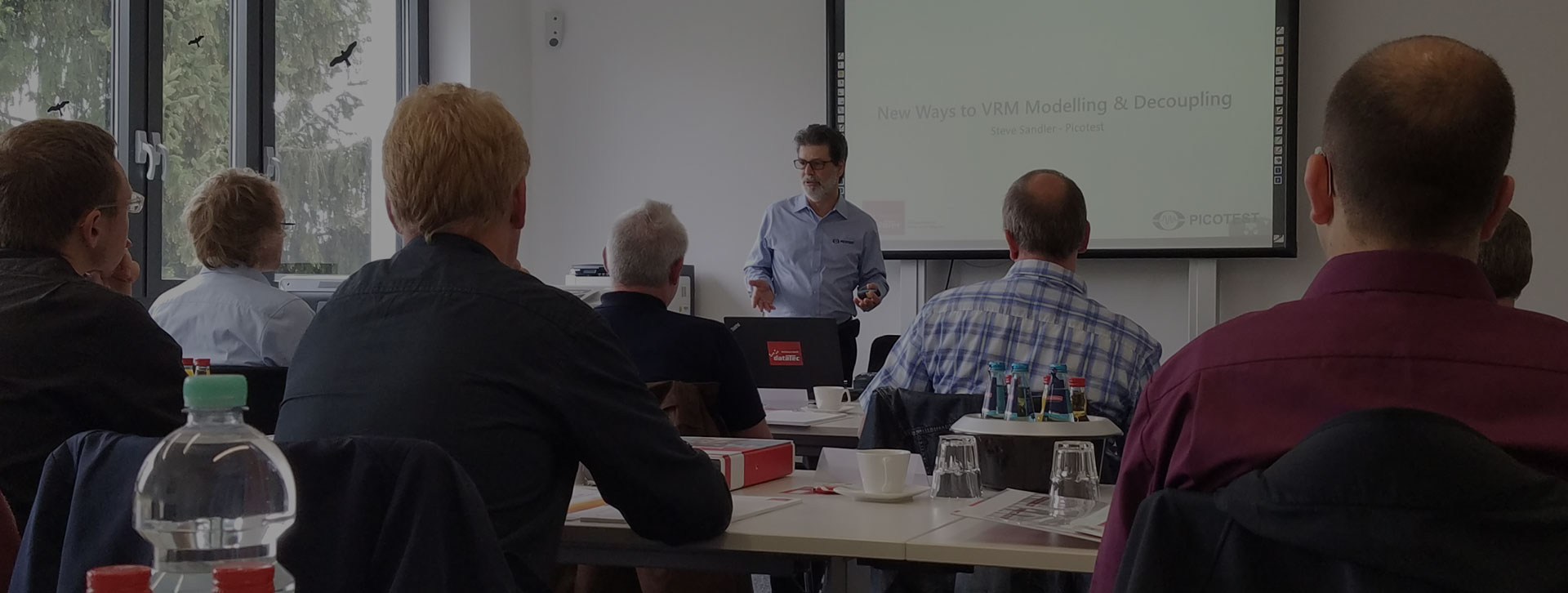Measuring Systems Part 2
Edges Example - Different Probes
Description:
The type of probe used to measure an edge may have a significant impact on the fidelity of the measurement. A 1X probe does not attenuate the measured signal, however the load capacitance of the probe is higher than a 10X probe. A 10X voltage probe, which introduces attenuation to the signal, will have a lower capacitive load at the expense of a higher minimum measurable signal. This test measures the rising edge of the 10MHz clock signal using a 1X and 10X probe.
Instrument: Oscilloscope
PI Class Parts Kit Components: N/A
Injectors: N/A
Probes: 1:1 probe, 10:1 probe
Voltage Reference Step Load
Description:
There are several reasons for step load testing, one of which is that it provides an assessment of the stability of the control loop. A second reason for step load testing is to assess voltage excursions. A step load could also be used to assess the Q of passive filters, such as a ferrite bead and its associated decoupling capacitors, to assess the non‐linearity of a circuit with respect to operating load current, to gain insight into the large signal behavior of a circuit, or to determine the susceptibility of other circuits that are connected to the circuit under test. This test measures the step load of a voltage reference.
Additional Resources (Power Integrity, pages 217‐232):
LDO Regulator Step Load
Description:
This test highlights one of the main uses for the 2‐Port probe. The ability to both inject and record a signal at the same time. This test measures the step load of an LDO regulator under changing load (stability) conditions. The spectrum of the step load response is also examined.
Additional Resources (Power Integrity, pages 217‐232):
POL Switching Regulator Step Load
Description:
This test measures the step load response of a 2.9MHz switching POL regulator.
Additional Resources (Power Integrity, pages 217‐232):
POL Input Capacitor Ripple
Description:
A periodic variation in output voltage resulting from an expected event is called ripple. For example, the switching action of a switching power supply is expected to result in an output ripple voltage. The rectification of the AC mains is expected to result in an input ripple signal. While the ripple may not be at a fixed or specific frequency, for example in a frequency modulated resonant converter, the ripple is an expected result. This test measures the input ripple of the POL across C2.
Additional Resources (Power Integrity, pages 223‐252):
POL Ripple and Noise
Description:
This test measures the POL ripple in the time and spectrum domains.
